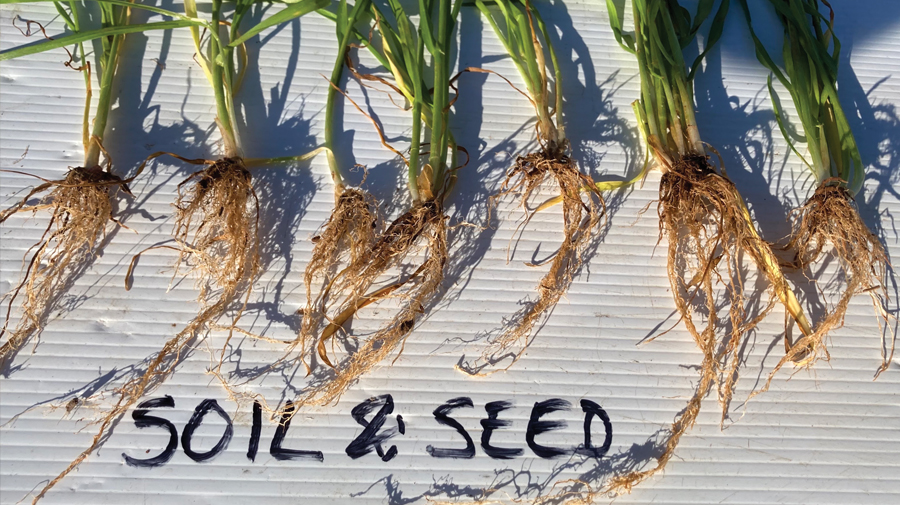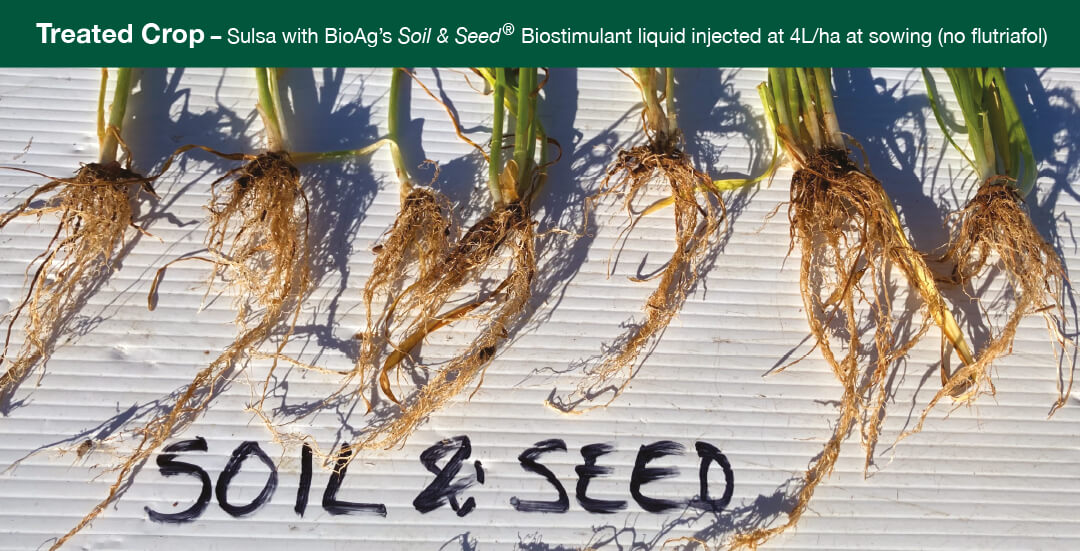
Latest
News
Liquid Boosts for Permanent Plantings
There are certain times within the growing cycle of a crop that can do with a boost to help nature’s processes along.
Restoration of soil biological, chemical, and physical properties particularly after harvest, is crucial to sustaining future yields and quality, building soil fertility and maintaining high performing soils ready for the next crop.
Post-summer harvest and winter cropping period
Nutrient supply to plants is heavily determined by soil characteristics. Mineral shortages or cation imbalance, heavy and waterlogged soils or low oxygen levels in soils will have a negative impact on crop nutrient supply and uptake, notably at establishment.
Winter crops emerging require proximity to nutrients for initial uptake. The plant then establishes soil microbial associations and root mass to access additional nutrients. Many common farming practices deplete the level of beneficial organisms in the soil.
For permanent plantings, post-harvest is a critical period for crop recovery and how well a crop recovers is aligned to next seasons harvest.
Post-harvest in permanent planting and sowing for winter crops is the time to consider a broad-spectrum balanced food supply of carbohydrates, amino acids, enzymes, vitamins, essential nutrients and growth promoters, that feeds both plants and beneficial soil micro-organisms. A strong soil microbiome provides the best opportunity for supply of nutrients to crops even in poorer soils.
BioAg’s Soil & Seed® biostimulant improves soil structure, thereby increasing nutrient and moisture retention in the soil and greatly reducing the amount of nutrient lost through leaching. It encourages rapid germination and early root development and helps buffer the crop against stresses such as pests, heat, frosts, drought, and disease.
Soil & Seed is an excellent soil microbiome builder, feeding and expanding the volume and diversity of beneficial soil micro-organisms. In turn improving nutrient solubilisation, cycling and uptake and improving soil properties mitigating heavy clay, and issues associated with high magnesium levels.
Soil & Seed increases plant establishment rates for row and broad-acre cropping, acts as a plant growth stimulator due to the available complex organo-chemical composition that includes macro- and microminerals, free L-amino acids, carbohydrates, humic compounds, and vitamins.
Versatile in application, Soil & Seed can be applied using fertigation, soil applied, seed-applied, or foliar boom spray. It can be mixed in with other common tank blends including calcium nitrate, UAN, dissolved urea, micro-nutrients and other foliar applied products.
• larger root network with more secondary roots; improving access to soil nutrients and moisture, enhancing the crops inherent resilience
• typical conventional system root growth
Fruit fill and maturation
Nutrient requirements vary depending on the crop growth stage. Close to maturation tree crops and vines are accumulating sugars and building yield characteristics such as sugar to acid ratio and colouring.
BioAg’s Fruit & Balance® is a fermented microbial culture that contains a rich source of vitamins, minerals, enzymes, amino acids, carbohydrates that supports fruiting and are beneficial for fruit quality improvement and increases resilience to abiotic stresses such as heat, salinity and water stresses. It is a natural bio-chelator of water-soluble nutrients and trace element salts. It also delivers a readily available source of phosphorus at a time when permanent plantings and crops have a peak demand.
Fruit & Balance also enhances the nutritional value and quality of fruit by supporting plant functions that increase sugar levels, improve fruit firmness and storage quality and reduce fruit splitting.
Both are recommended as foliar applications in a tank mix with any required nutrients for management of deficiencies or uptake issues; due to factors such as pH or high cation antagonism*.
* Interaction among plant nutrients can yield antagonistic or synergistic outcomes that influence nutrient use efficiency. High cation antagonism refers to when the yield response of two nutrients where combined is less than expected from the individual nutrient responses.




Recent Comments